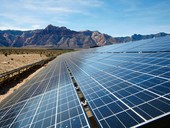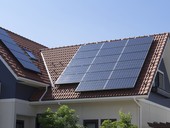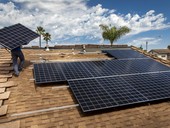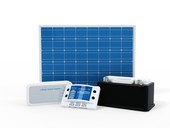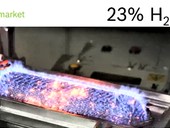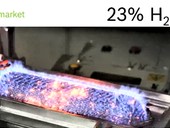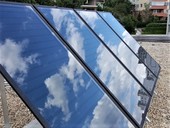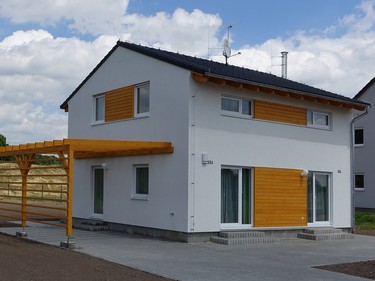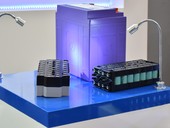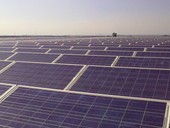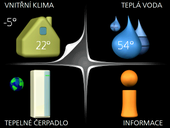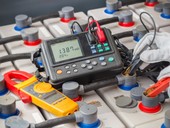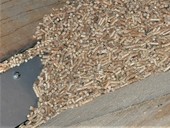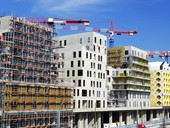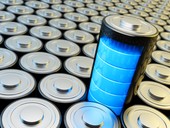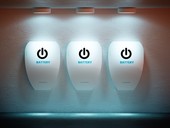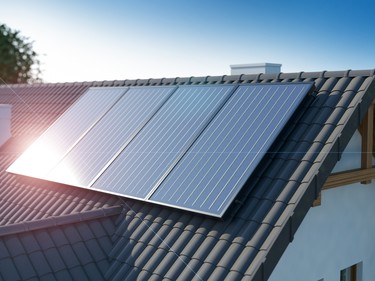The paper deals with the possibilities for use of glass recyclate from photovoltaic panels for concrete masonry units. It compares partivular recipes and its physical and mechanical properties with the main focus on the compressive strength. It then compares the values of these recipes with the values of commonly used composite materials for masonry units without recyclates.
Archiv článků od 16.12.2019 do 31.5.2021
Alternative energy sources are gradually taking a growing share in the worldwide production of electricity. Solar power is perhaps the easiest to implement and least expensive, its use is not too complicated and can you can easily experiment with it even in a small scale. It is easily accessible to anyone interested in environmentally friendly production of energy. To get started with it, it is just enough to buy one solar panel with a few additional components, and place it on a sufficiently sun-lit place and the production of energy can begin. Certainly, an interesting idea for users is that after the initial investment the system for several years basically doesn't have any requirements, and that it will produce energy for free.
A solar panel (photovoltaic panel or module) is a part of several interconnected solar units with a usual output of around 300W, which generated an voltage corresponding to the multiple voltages of the interconnected individual units. The source of higher outputs consisting of several interconnected solar panels is usually referred to as a solar power plant.
The authors analyze the possibility of burning natural gas with an admixture of hydrogen in gas appliances. The positive and negative aspects of the hydrogen content in natural gas and recommendations for its mixing into the natural gas distribution system are presented.
The contribution describes the effect of hydrogen content ranging from 0 to 25 mol% in a mixture with natural gas on burning in household appliances. Gaseous fuels with similar combustion characteristics, in particular Wobbe index and burning velocity, can only be used in a particular household appliance as a substitute. The various chapters describe the effect of hydrogen content in natural gas on the following: Wobbe index, composition of exhaust gases; emissions of CO2, CO and NOx; burning velocity; output of burners/energy demand of appliances, efficiency of appliances; flame stability; and temperature of combustion. Recommendations on hydrogen content in natural gas for household appliances, accepted from reference literature, are set out there. In conclusion, the authors discuss the pluses and minuses of hydrogen content in natural gas and offer recommendations for hydrogen injection into natural gas distribution systems from the perspective of burning these mixtures in household appliances.
The design of a solar system for the preparation of hot water in an apartment building is analyzed by computer simulation. The analysis shows the effects of the design of the area of solar collectors, climatic conditions, the connection of the circulation circuit and the design of the volume of the solar storage tank on the solar coverage and specific heat gains.
In connection with the entry into force of Decree No. 264/2020 Coll., On the energy performance of buildings, the method of assessing the energy performance of new buildings is changing. The article on the case study of a family house presents an approach to the concept of technical systems of new family houses from the point of view of current and future requirements (from 1. 1. 2022) for the energy performance of buildings.
The design of PV systems with regard to the maximum annual yield (total energy obtained per unit of installed capacity) is slowly becoming a thing of the past. Systems with the adaptation of the production diagram to the local consumption consumption diagram and systems with better use of the space required for the installation of the PV array come to the fore.
The subject of the research is a ventilation unit with a heat pump providing vacuum ventilation in a specific family house. The year-round energy balance of the operation was prepared from the obtained parameters. For a total heat loss of 5 kW, the seasonal heating factor SPF of the entire system was evaluated at the level of 2.5.
This article describes a long-term Renewables Power Purchase Agreement under which a consumer purchases renewable electricity directly from an electricity producer. Signing a renewables PPA ensures that the producer acquires the long-term revenue stream through the sale of energy and the costumer gets the fixed electricity price for the entire period of the contract.
This is a case study of a multifamily residential building that has been environmentally assessed in terms of greenhouse gas (GHG) production using a simplified life cycle assessment (LCA) method. The results of total GHG emissions were compared to the emission limit value, which was set based on the climate objectives of the Paris Agreement and the scientific report The Emissions Gap Report. In response to the non-compliance with the emission limit, a number of emission-saving measures have been proposed and have been suitably designed into variants meeting the emission requirement.
This is a case study of a multifamily residential building that has been environmentally assessed in terms of greenhouse gas (GHG) production using a simplified life cycle assessment (LCA) method. The results of total GHG emissions were compared to the emission limit value, which was set based on the climate objectives of the Paris Agreement and the scientific report The Emissions Gap Report. In response to the non-compliance with the emission limit, a number of emission-saving measures have been proposed and have been suitably designed into variants meeting the emission requirement.
The article acquaints readers with the situation on the European and world market for hybrid photovoltaic-thermal (FVT) collectors. This year, FVT collectors first appeared in the world statistics of solar thermal systems as a significant part of the market. However, their installations are still rare in the Czech Republic.
zpět na aktuální články
